solarsystem
Latest

NASA releases sharpest-ever images of distant Kuiper Belt object
The mysterious Kuiper Belt object 2014 MU69 now exists as more than a generic-looking blob. NASA has posted its sharpest-ever images of the object, captured a relatively close 4,109 miles away at 12:33AM on January 1st. While scientists already knew some details about MU69 before now, such as its unusual two-part 'pancake' shape, these higher-quality images show details that just weren't visible before. You'll find circular pieces of terrain, deep pits (visible toward the top) and other details that were previously elusive.
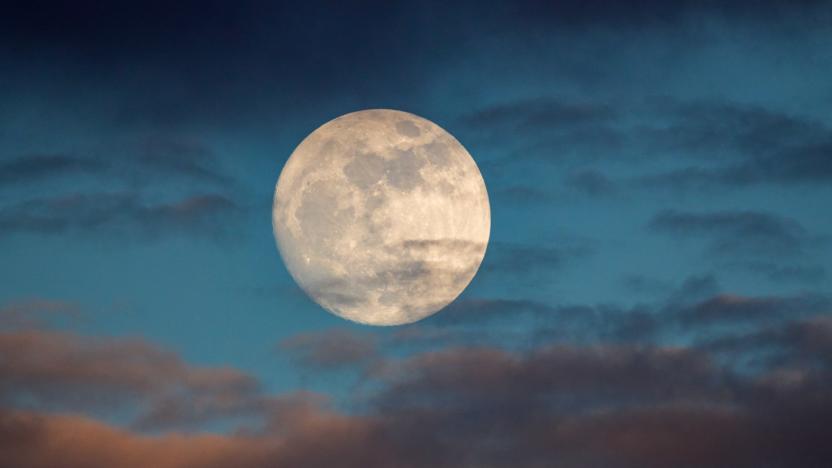
NASA models suggest the Moon was born from Earth materials
The most commonly accepted theory for the Moon's creation involves a collision between Earth and a Mars-sized body (Theia) that split off a chunk of the larger body and created an orbiting neighbor. You might have to reconsider that explanation, however. NASA researchers have developed a new model that suggests the Moon is made of the same materials as Earth, not its cosmic nemesis. The approach simulates the processes of the Moon's formation using 14 volatile, metal-loving elements found in samples from the Apollo missions, providing a complex understanding that hasn't been attempted before. The concentrations of those elements could speak volumes about what happened, according to the scientists.
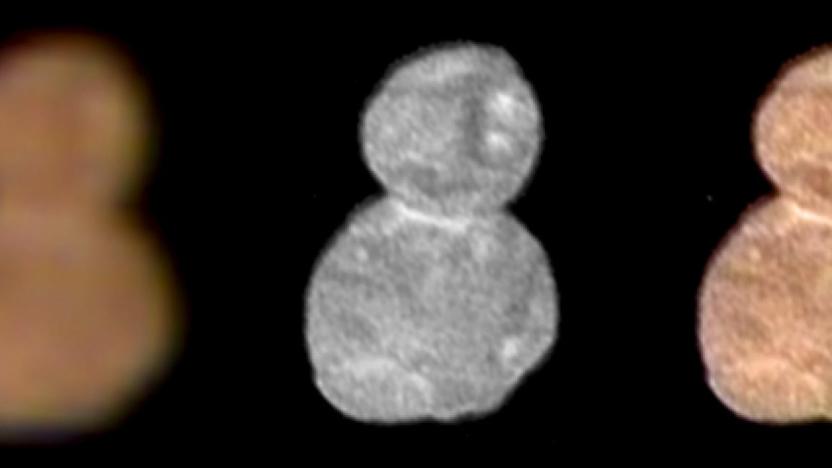
NASA releases first clear images of distant Kuiper Belt object
NASA's New Horizons team has released the promised first images from its history-making flyby of (486958) 2014 MU69, and they're already shedding some light on the early Solar System -- while also raising some questions. The snapshots, captured from as close as 17,000 miles away, show that the 21-mile-long Kuiper Belt object is a "contact binary" where two spheres slowly collided and fused with each other. The two may have linked up "99 percent of the way" to the start of the Solar System, Johns Hopkins University APL said.
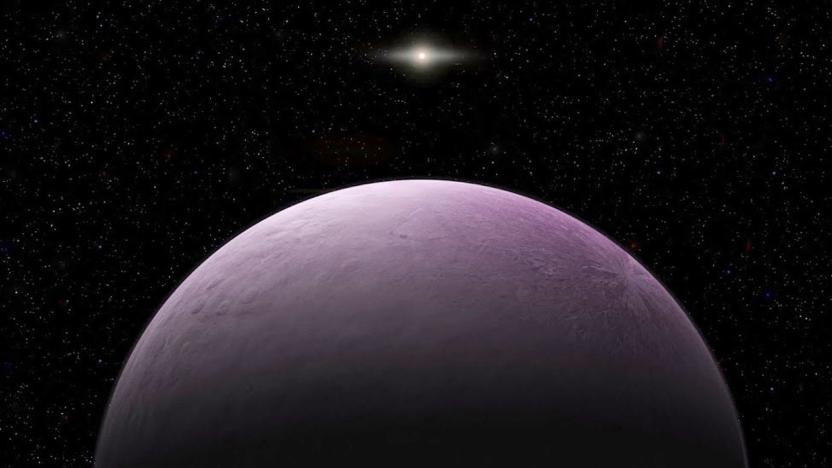
'Farout' is the farthest Solar System object known to date
The reach of the Solar System extends well beyond the full-size planets, and that's becoming clearer than ever with a new discovery. Astronomers have detected 2018 VG18 "Farout," which is the most distant Solar System object known to date at 120AU from the Sun (about 11.15 billion miles) -- the previous record-setter, the dwarf planet Eris, is 'just' 96AU away. That makes it over three and a half times farther from the Sun than Pluto (34AU), and over 100 times farther than Earth. But what is it, exactly?

OSIRIS-REx spacecraft already found water on its target asteroid
It didn't take long for NASA's OSIRIS-REx spacecraft to glean valuable insights from the asteroid Bennu. The vessel has helped scientists discover water trapped inside Bennu's clays thanks to its two spectrometers, which spotted the hydroxyls (bonded hydrogen and oxygen atoms) that indicate interaction with water. Researchers believe Bennu's parent astroid hosted liquid water at one point, and these traces carried over to the smaller space rock.
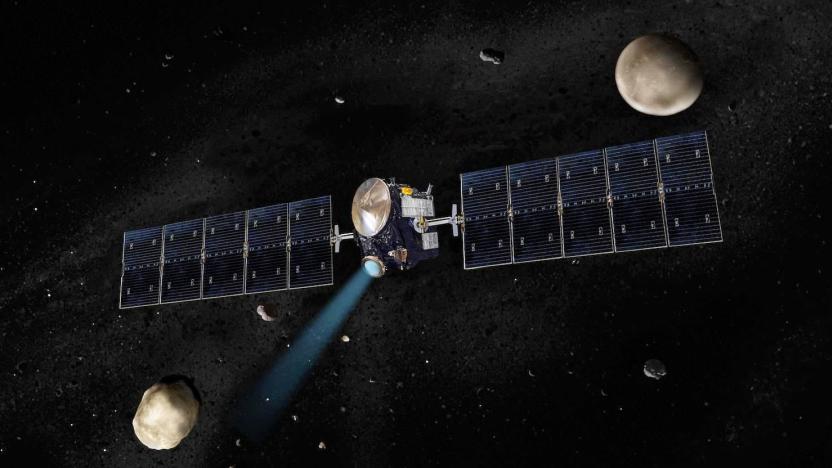
NASA says goodbye to its Dawn spacecraft after 11 years of service
NASA's Dawn spacecraft has run out of fuel, and its mission has come to an end. Launched in 2007, Dawn orbited the two largest bodies in the main asteroid belt -- Vesta and Ceres -- collecting valuable data that have helped scientists understand how objects formed in the early solar system. "Today, we celebrate the end of our Dawn mission -- its incredible technical achievements, the vital science it gave us and the entire team who enabled the spacecraft to make these discoveries," Thomas Zurbuchen, associate administrator of NASA's Science Mission Directorate in Washington, said in a statement. "The astounding images and data that Dawn collected from Vesta and Ceres are critical to understanding the history and evolution of our solar system."
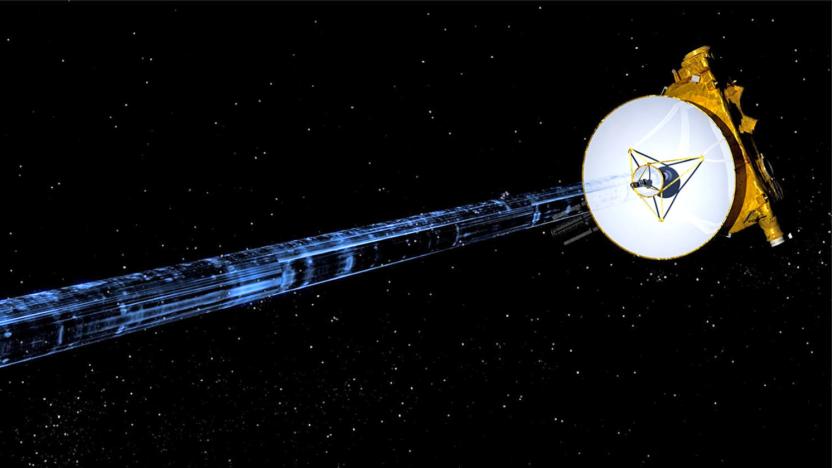
New Horizons probe may have detected Solar System's hydrogen 'wall'
Scientists have learned a bit about the edge of the Solar System from Voyager 1, but there hasn't been a lot of corroborating data without follow-up spacecraft. They appear to be getting a second chance, though. NASA's New Horizons spacecraft has detected what appears to be a "wall" at the edge of the Solar System where interstellar hydrogen gathers as it collides with the solar wind -- in other words, the very edge of the Sun's influence. Researchers found it by capturing a 360-degree snapshot of ultraviolet emissions around the probe, revealing an unusual brightness (potentially bunched-up hydrogen) similar to a signal the Voyager mission detected 30 years ago.

Website follows journey of Elon Musk's Tesla Roadster through space
Elon Musk's Tesla Roadster may have slipped the surly bonds of Earth, but you can still follow its path through the Solar System. Satellite guru Ben Pearson's unofficial Whereisroadster.com website is tracking the EV based on NASA data and his own flight modeling (which, it turns out, is more accurate than Musk's). The site not only gives you an idea of the relative position and speed, but offers fun tidbits such as the number of times the car has voided its 36,000 mile warranty and its equivalent fuel economy if it had traveled under its own power.

Our solar system may have formed inside a giant space bubble
There are various theories about how the solar system formed, but scientists haven't been able to agree on a single model that explains all the quirks of our corner of space as it exists today. Now, scientists at the University of Chicago have come up with a new model that explains an enduring mystery about the early solar system. They hypothesize that our solar system formed inside a massive space bubble, which was produced by a star 40 to 50 times the size of our sun. The research was published today in Astrophysical Journal.
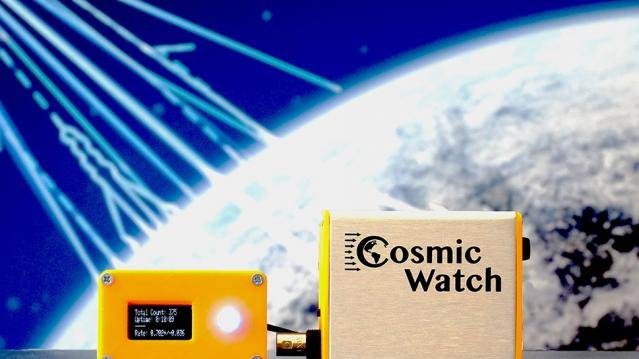
MIT's DIY muon detector sniffs out cosmic particles
Scientists at MIT have designed a pocket-sized muon detector that can be easily made with common electrical parts, meaning anyone can kit themselves out with legitimately-functional Ghostbusters-esque gear for less than $100. The device detects the charged particles -- muons -- that come from the high-energy cosmic rays blasted from supernovae beyond the solar system. These particles last only a fraction of a second but can be found in every layer of the planet's atmosphere, with some even penetrating the Earth's surface and burrowing into rock and ice.
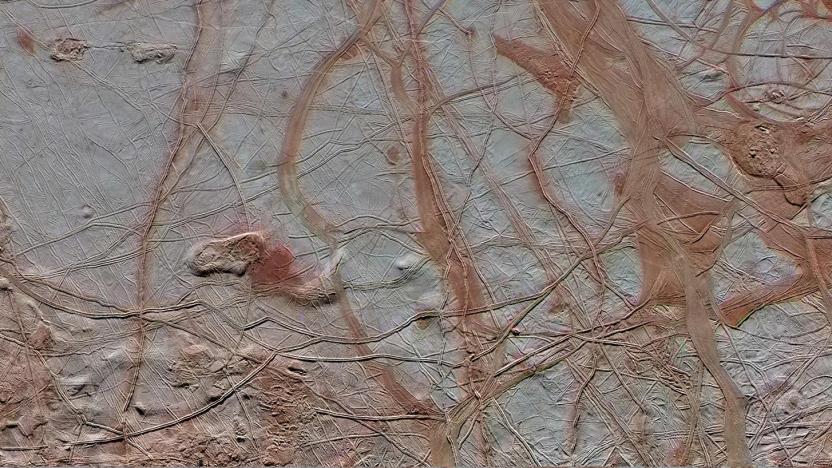
Touring the solar system with a new book of NASA photos
It's easy to get jaded by images of our solar system, especially when NASA probes like Cassini make it look so routine. A new book called The Planets, written and curated by Nirmala Nataraj with a forward by Bill Nye and featuring hundreds of stunning NASA images, should cure you of your cynicism. As Nye puts it, we haven't exactly been doing this for a long time. "You are looking at images with a clarity and sharpness that our ancestors probably couldn't even imagine, let alone capture," he said.
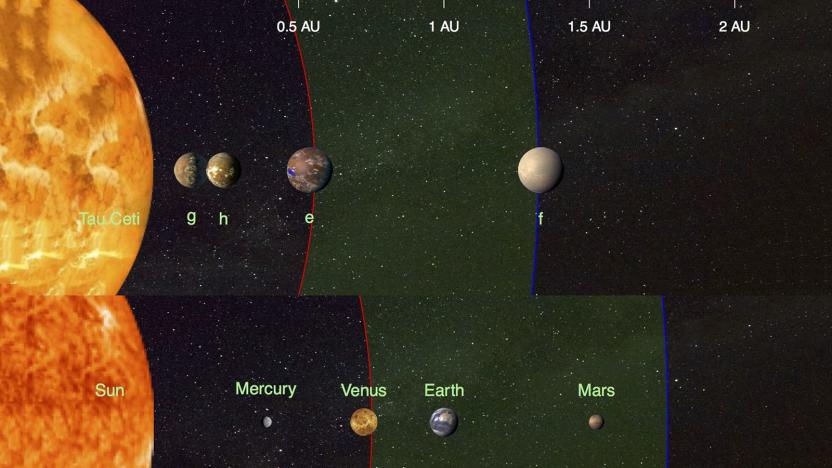
A nearby Sun-like star hosts four Earth-sized planets
Exoplanet discoveries are getting pretty common, so it takes something special to catch our attention. A star called Tau Ceti fits the bill, as it's just 12 light years away and unlike the Trappist-1 red dwarf, is very similar to our own yellow dwarf (G-type) sun. Researchers have determined that it probably hosts planets like Earth that sit in its habitable zone. The only hitch is that the star is known to have a massive debris disk that probably bombards its worlds with asteroids, so living there would be a pretty big challenge.
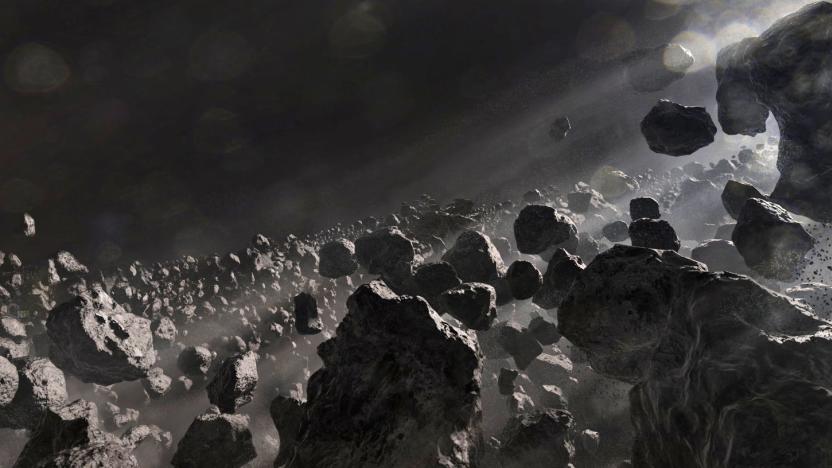
Asteroid family is as old as the Solar System itself
To date, astronomers haven't seen asteroid families (that is, asteroids with a common source) in the Solar System older than about 3 billion years -- well after the star system came to be 4.5 billion years ago. However, they'll have to rethink their expectations. Researchers studying asteroid data (including infrared radiation from the WISE space telescope) have found an asteroid family that's over 4 billion years years old, and likely as old as the Solar System itself. The trick was to both rule out existing asteroid families and look for the telltale signs of a very, very old group of rocks.

Jupiter is the oldest planet in the Solar System
Jupiter's ancient name really is well-deserved: according to a new study, the king of the planets isn't just the largest in the Solar System, it's also the oldest. A team of researchers from Lawrence Livermore National Laboratory in California and the University of Munster in Germany have determined that Jupiter's core was already 20 times the size of Earth merely 1 million years after the sun took shape 4.6 billion years ago. Since newborn stars tend to release energy that blows away gas and dust for planet formation, the gas giant must have had to absorb materials very, very fast.

NASA seeks comet 'crumbs' with a new detection technique
It's relatively trivial to spot comets, but spotting the dust they leave behind? That's no mean feat -- it's like tracking grains of fast-moving sand on a cosmic-scale beach. NASA, however, might just have a way of mapping that dust. It's developing a technique that would use the movement of the ESA's LISA Pathfinder probe to detect the minuscule "crumbs" left by comets and asteroids. The trick involves tracking the tiny thruster bursts Pathfinder uses to compensate for dust stream impacts. When you measure the direction and strength of those bursts, you can get a good sense of the dust's impact location, size and trajectory.

NASA to announce a 'discovery beyond our solar system' tomorrow
Exoplanets, those that orbit stars beyond our own Sun are the most likely places that we'll discover extraterrestrial life. On Wednesday, February 22nd, NASA is planning to announce a "discovery beyond our solar system" at a press conference in Washington DC.
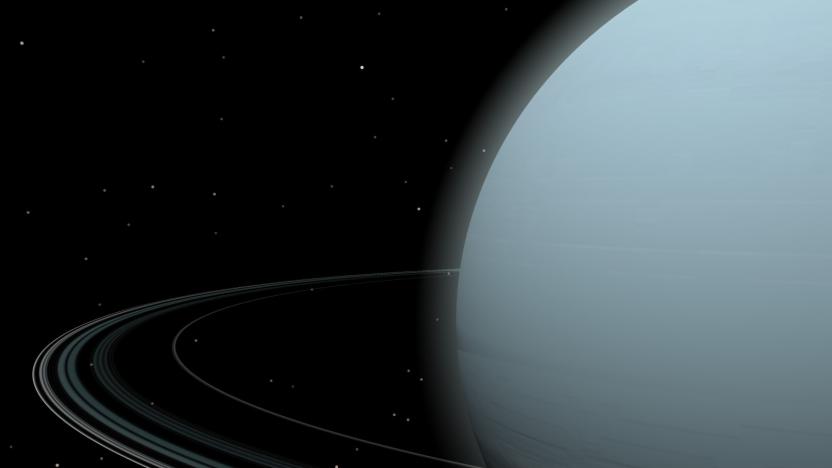
Uranus might have two more moons
NASA launched its two Voyager probes almost 40 years ago, sending the first on a more direct route out of the solar system. Voyager 2 took a longer route to survey Neptune and Uranus in 1986, becoming the first and only spacecraft to fly by the ice giants. Scientists continue to comb over that data, and they might have just made a discovery from the 30-year-old recordings: Two additional moons orbiting Uranus, bringing its total to 29.

Juno probe makes the closest-ever encounter with Jupiter
If you thought the Juno probe's first photos of Jupiter were tantalizing, you're in for a treat. The spacecraft just completed the closest approach it will take during its primary mission around the gas giant, passing a mere 2,600 miles above the surface early on the 26th. It's the closest any vehicle has been to Jupiter, and NASA researchers already believe that they'll discover new things about the Jovian world once they process the data (which could take "some time," NASA warns). And of course, it's a prime photographic opportunity. You'll not only get the sharpest-ever photos of Jupiter's atmosphere when photos arrive late next week, but the first good look at the planet's poles.
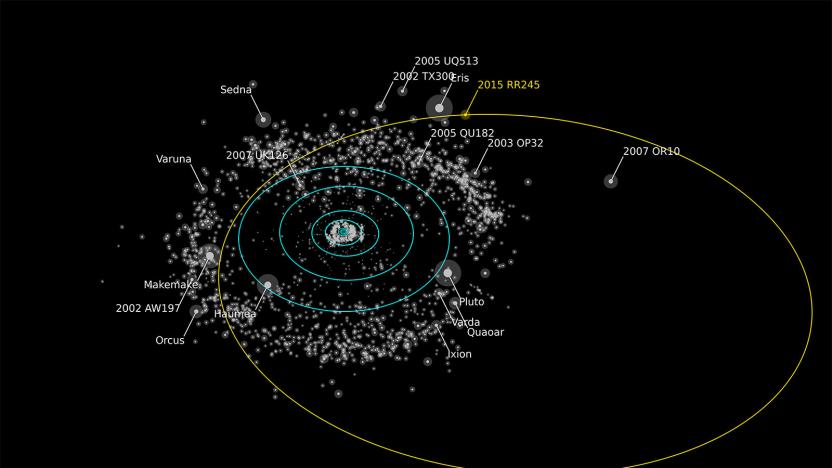
Hawaiian telescope spots a new dwarf planet beyond Neptune
Just beyond Neptune lies a ring of small, icy worlds that offer insight into the formation of our Solar System, and scientists using the Canada-France-Hawaii Telescope on Maunakea, Hawaii, just discovered a new dwarf planet in this region that rivals Pluto and Eris in visibility. It's called RR245 and in this case, size matters -- many of the worlds in the farthest reaches of the Solar System are too small and dull for Earthbound scientists to study. Basically, when it comes to post-Neptune dwarf planets, the bigger and brighter, the better.

Juno: An inside look at NASA's mission to Jupiter
Juno is going where no spacecraft has before. NASA's solar-powered ship was launched five years ago, sent on a mission to study Jupiter, the largest gas globe in our solar system. Now, after almost a couple thousand days on course, it is on track to arrive at Jupiter on the evening of July 4th to scan, measure, study and photograph the planet. On a recent trip to the Jet Propulsion Laboratory (JPL) headquarters in Pasadena, I caught up with lead project scientist Steve Levin for a rundown of the mission and the specific event that could potentially uncover the mysteries of our entire solar system.









